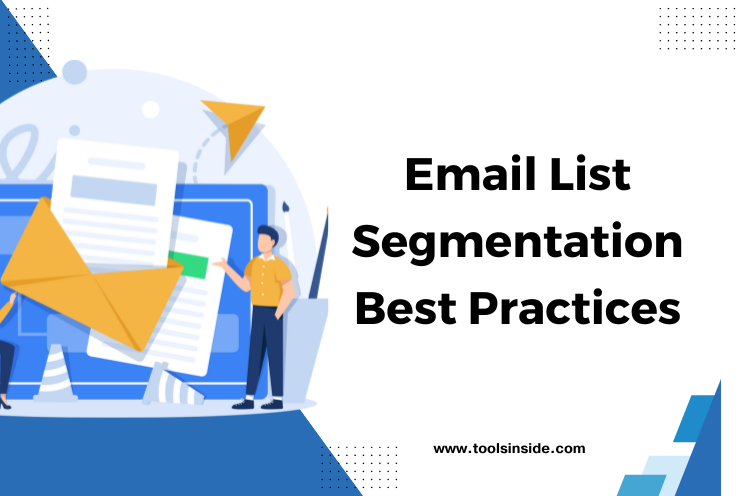Let’s cut to the chase. You’ve got a solid email list, but you’re sending the same message to everyone. You know that’s not working. Open rates? Meh. Click-through rates? Could be better. You’re missing the mark because you’re treating everyone the same when they’re not. Email list segmentation is the secret sauce to changing that.
Ever wonder why some emails hit home while others go straight to the trash? It’s all about knowing who you’re talking to. Segmenting your email list allows you to tailor your messages so that they speak directly to each group’s interests, needs, and pain points. This isn’t just a ‘nice to have’—it’s essential. When done right, email list segmentation can significantly improve your open rates, click-through rates, and, ultimately, your conversion rates.
You might be thinking, “Is it really worth the effort?” Trust me, it is. The data shows that segmented email campaigns perform better across the board. More relevant content means happier subscribers, which means more sales. So, if you’re serious about leveling up your email marketing game, let’s dive into the best practices for email list segmentation that will make your emails not just openable, but unignorable.
Key Principles of Effective Email List Segmentation

Now, before you start chopping up your email list, you need to know the rules of the game. Effective email list segmentation isn’t just about slicing and dicing your list. It’s about being strategic—knowing what data to use and how to use it.
Here’s where most people get it wrong: they either overcomplicate it or don’t segment enough. You want to find that sweet spot where your segments are meaningful but not so specific that you’re left with a bunch of micro-lists that are impossible to manage.
Identify Your Segmentation Criteria
- Demographics: Age, gender, location—these are your basic building blocks. If you’re a retail brand, knowing that 60% of your customers are women aged 25-34 living in urban areas can be gold.
- Behavioral: How your subscribers interact with your brand matters. Are they frequent buyers? Do they only engage during sales? These behaviors tell you a lot about what they want.
- Preferences: This is where you get personal. Some people want to hear about new products, others care more about deals. Give them what they ask for, and they’ll keep coming back.
Collect and Analyze Subscriber Data
- Use your CRM to gather this information. The more data you have, the better you can segment.
- Look at past campaigns to see what’s worked and what hasn’t. This will help you refine your segments.
Leverage CRM and Email Marketing Tools
- Tools like Mailchimp, HubSpot, or Klaviyo can help you automate the segmentation process. Set up rules based on your criteria, and let the software do the heavy lifting.
Best Practices for Email List Segmentation
You’ve got your data. Now what? It’s time to put it to work with these best practices.
1. Demographic Segmentation:
- Start simple. Age, gender, location. These are easy wins. If you know where your customers are coming from, you can time your emails to hit when they’re most likely to be online.
- Example: A clothing brand might segment based on gender to send targeted promotions for men’s and women’s collections.
2. Behavioral Segmentation:
- This is where you dig a little deeper. What actions have your subscribers taken? Did they open your last email? Did they click on a specific product?
- Example: An e-commerce store could segment based on purchase history, sending personalized recommendations based on what customers have bought before.
3. Psychographic Segmentation:
- This is next-level stuff. It’s not just about who your customers are, but why they do what they do. Interests, values, lifestyle—these are the things that drive their decisions.
- Example: A fitness brand might segment their list based on whether subscribers are interested in weight loss, muscle gain, or general wellness.
4. Dynamic Segmentation:
- Your segments shouldn’t be static. As your subscribers’ behavior changes, so should your segments. This is where dynamic segmentation comes in—your segments update in real-time based on new data.
- Example: If a subscriber suddenly starts clicking on a lot of email marketing-related content, they should be moved into a segment that gets more of that kind of content.
5. A/B Testing for Optimized Segmentation Strategies:
- Test different segmentation strategies to see what works best. Maybe segmenting by behavior works better than demographics for your brand. The only way to know is to test.
- Example: Test one segment that receives personalized product recommendations against another that gets generic promotions. See which performs better.
Personalization Through Segmentation
Now that you’ve got your segments, it’s time to personalize. This is where the magic happens. Personalization isn’t just about slapping someone’s first name in the subject line. It’s about making the content so relevant that it feels like it was made just for them.
1. Crafting Personalized Email Campaigns:
- Speak directly to your segments. If you know that Segment A is interested in high-end products, don’t waste their time with budget deals.
- Example: A tech brand could send different emails to their segments—one focusing on the latest gadgets for tech enthusiasts, another offering discounts for bargain hunters.
2. Dynamic Content:
- Use dynamic content to change what different segments see within the same email. One email, multiple versions.
- Example: An email from a travel company could show different destinations based on past browsing behavior.
3. Case Studies:
- Look at brands that are killing it with segmentation. What are they doing that you can learn from?
- Example: Spotify is a master at this. Their year-end wrap-up is a prime example of using segmentation to create personalized content that subscribers love to share.
Measuring the Success of Your Segmentation Strategy
You’ve put in the work. Now it’s time to see if it’s paying off.
1. Key Metrics:
- Open Rates: If your emails are more relevant, your open rates should go up.
- Click-Through Rates: The more targeted your content, the more likely your subscribers are to engage with it.
- Conversion Rates: Ultimately, this is what it’s all about. Are your segments leading to more sales?
2. Tools and Techniques:
- Use your email marketing platform’s analytics to track these metrics.
- Look for trends over time—don’t just focus on one campaign.
3. Continuous Improvement:
- Segmentation isn’t set-and-forget. Keep refining your segments based on what the data tells you.
- Example: If a segment’s engagement starts to drop, it might be time to re-evaluate your criteria or try a different strategy.
| Key Metric | What It Measures | Why It Matters |
|---|---|---|
| Open Rate | Percentage of recipients who open your email | Indicates subject line effectiveness |
| Click-Through Rate | Percentage of recipients who click a link in the email | Measures engagement and content relevance |
| Conversion Rate | Percentage of recipients who take the desired action | Shows the overall effectiveness of your campaign |
Common Pitfalls to Avoid in Email Segmentation
Don’t let these mistakes derail your efforts.
Over-Segmenting:
It’s easy to go overboard. Too many segments can lead to burnout and diminish returns. You don’t want to end up spending more time managing your segments than actually creating content.
Ignoring Subscriber Preferences:
Always give your subscribers control. Let them choose what they want to hear about and how often.
Failing to Update Segments Regularly:
Segments aren’t static. As your subscribers change, so should your segments. If you’re not updating them, you’re missing out on opportunities to stay relevant.
FAQs
What is email list segmentation?
Email list segmentation is the process of dividing your email list into smaller, more targeted groups based on specific criteria like demographics, behavior, and preferences.
Why is email list segmentation important?
It allows you to send more relevant content to your subscribers, leading to higher engagement and better conversion rates.
How often should I update my email segments?
Regularly. As your subscribers’ behavior and preferences change, so should your segments. Aim for at least quarterly updates.
Can I over-segment my email list?
Yes. Over-segmenting can lead to inefficiency and diminishing returns. Stick to meaningful segments that are large enough to be manageable.
What tools can help with email list segmentation?
CRM and email marketing tools like Mailchimp, HubSpot, and Klaviyo can automate and simplify the segmentation process
Conclusion
To sum it up: Segmentation is a game-changer. It’s not just about breaking down your email list—it’s about knowing your audience and delivering content that speaks directly to them. Follow these best practices, avoid the common pitfalls, and you’ll see better open rates, higher engagement, and more conversions.
So, what’s next? It’s time to take a hard look at your email list and start segmenting. You’ve got the knowledge—now put it to work. And remember, it’s not about being perfect right out of the gate. Test, refine, and keep improving. That’s how you win at email marketing.
